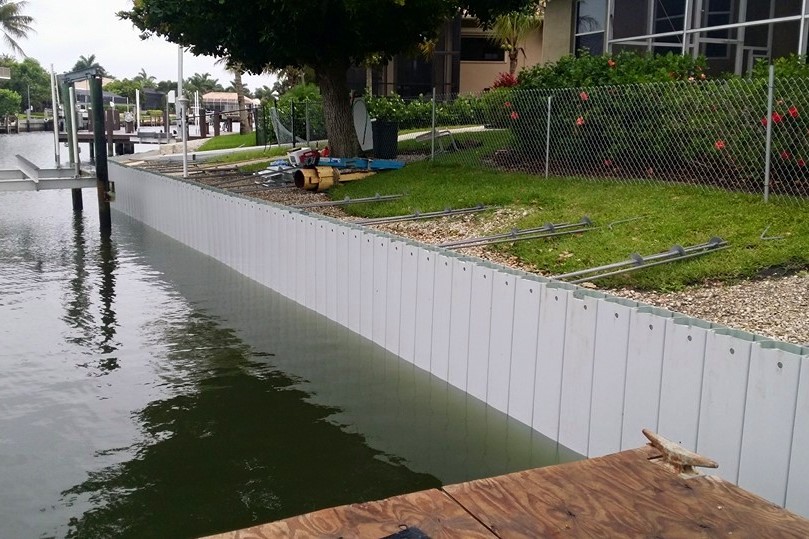Areas along the coastal US, in particular the state of Florida with the Everglades, has an amazing and fragile ecosystem. With exposed land and ecology in the water, it is imperative to try to minimize or have a low impact on the environment when protecting property from erosion. Installing seawalls is a common solution to protecting land and depending on the type of seawall product, the impact can vary.
According to an article on the American Society of Landscape Architects website on sustainable design, property owners “can significantly increase the quality of the environment through the use of innovative low-impact materials. These materials include permeable, recycled, recyclable, reflective (high albedo), and non-toxic materials.” The installation of vinyl seawalls can help minimize the environmental impact over the short and long term. In particular, one vinyl seawall product called Truline, is made of over 92% post-industrial recycled material and offers a long life cycle of 75+ years. Other seawall materials will deteriorate faster in salt-water and exposure to weather elements. In addition, Truline requires minimal space to install.
With the Truline wall system, the entire construction sequence is performed in a small footprint with minimal impact on your property. The unique thing about the Truline system is that it allows a steel- reinforced concrete wall to be constructed in front of an existing wall. This greatly minimizes the impact on the property and environment because the old wall does not have be removed and add to the landfill. From there, installation of the Truline wall is done with a small barge and knuckle boom from the water side of the wall. The modular nature of the system allows all construction materials to be staged and moved around the property without the use of equipment. The delivery truck stays in the street. The top of the wall is anchored using helical anchors which are screwed in subsurface and do not disturb the soil surface. The construction process is completed by filling the wall with reinforced concrete that is pumped to the wall site from the street once again eliminating the need for heavy equipment on your property.

